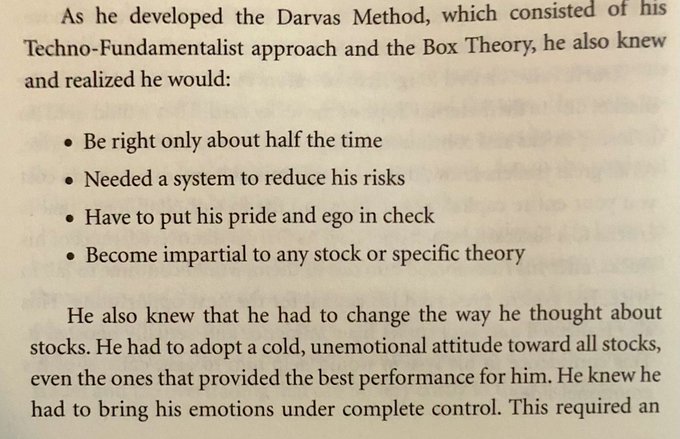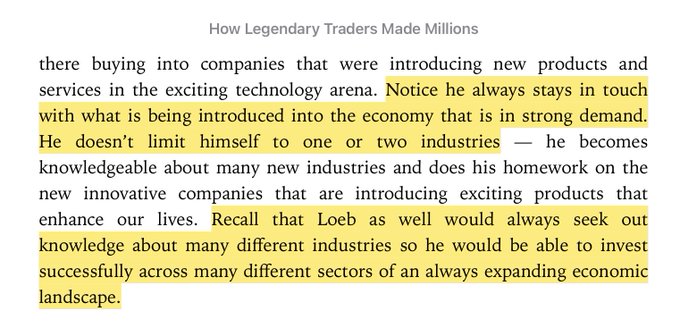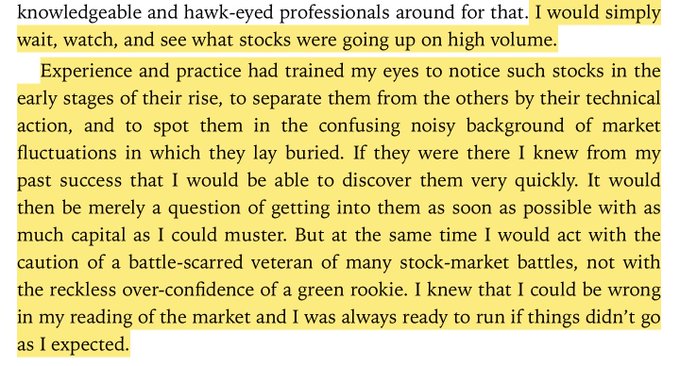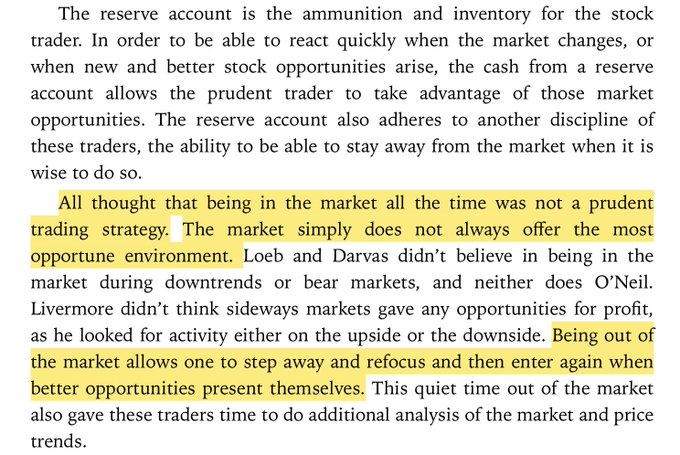Archives of “Education” category
rssWith a market that is broadening out it is wise to be able to cross some lines if opportunities arise elsewhere. You can be in multiple sectors if recovery and expansion dictates.
Warren Buffett vs. S&P 500.
BOFA talking about 1987
Good advice from ‘You Can Still Make It In The Market’ – Darvas (1977)
SOMETIMES I JUST SITS
And right here let me say one thing: After spending many years in Wall Street and after making and losing millions of dollars I want to tell you this: It never was my thinking that made the big money for me. It always was my sitting. Got that? My sitting tight! It is no trick at all to be right on the market. You always find lots of early bulls in bull markets and early bears in bear markets. I’ve known many men who were right at exactly the right time, and began buying or selling stocks when prices were at the very level, which should show the greatest profit. And their experience invariably matched mine –that is, they made no real money out of it. Men who can both be right and sit tight are uncommon. I found it one of the hardest things to learn. But it is only after a stock operator has firmly grasped this that he can make big money. It is literally true that millions come easier to a trader after he knows how to trade than hundreds did in the days of his ignorance.
Jesse Livermore, Reminiscences of a Stock Operator
From ‘How I Trade And Invest In Stocks And Bonds’ – Wyckoff 1925
From ‘Baruch – My Own Story’ – 1957 from Bernard Baruch
Thirsty Traders must read…
Inside the Mind
When I impulsively take the first type of countertrend trades (i.e. missed a good trend), here’s what is going through my mind:
- Woah, the move has already gone quite a distance.
- Sigh, I should’ve taken that entry earlier. I shouldn’t have followed my trading plan so strictly.
- Should I get in now? No, I cannot get in any more, I cannot chase the market, it’s too risky, I have no logical stop nearby, you don’t know when it might reverse down quickly.
- I have already missed the move. I need to wait to enter in the opposite direction when the trend ends.
- The trend has gone too far, it must turn soon
- Look! There’s a bit of resistance, the trend is about to turn, go short! (for an uptrend)
And the countertrend trade is made! Below are what I think are the psychological process at work:
- Observation
- Regret
- Trading is always full of regrets. You always think you can do better.
- Indecision, uncertainty, anxiety
- Fear of losing out starts to take hold.
- When you don’t have a well-defined trading plan that caters for all scenarios, or if you don’t believe in your trading plan, you will face indecision and anxiety.
- Resignation
- I accepting that I can no longer enter in the direction of the trend.
- Synthesized happiness (sour grapes)
- By cutting off that possibility (or imposing a self-restriction on my flexibility), my psychological immune system gets triggered to synthesize happiness.
- My non-conscious processes immediately ‘downgraded’ the idea of trend continuation (if I can’t get on, the trend must be bad), and boosted the idea that the trend will end.
- “Makes sense” stopping rule, rose-tinted glasses (read this for more details)
- My logical mind starts to look for evidence to support my subconscious mind’s assessment.
- Once the logical mind sees any supporting evidence, e.g. momentum waning, some resistance, it will stop thinking and conclude that my subconscious mind’s assessment is right. Hence a countertrend trade is taken.








